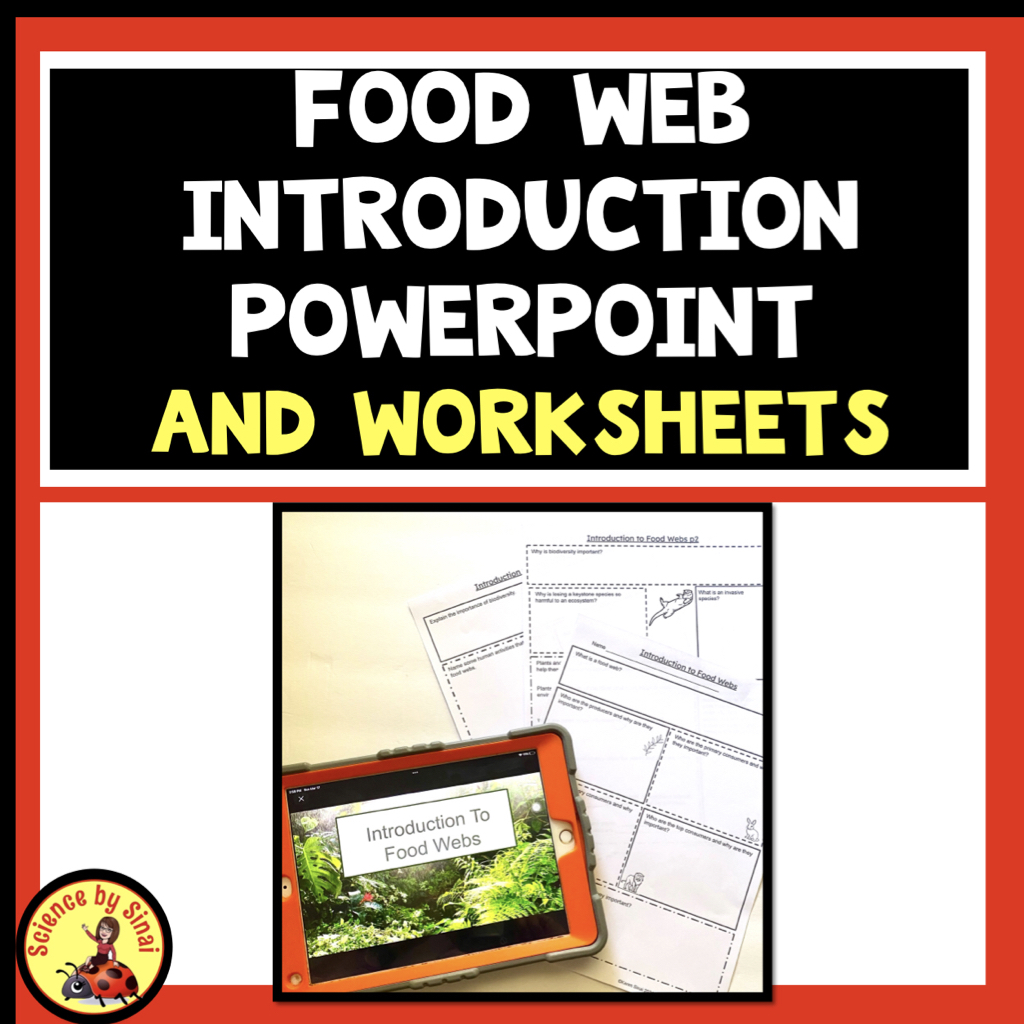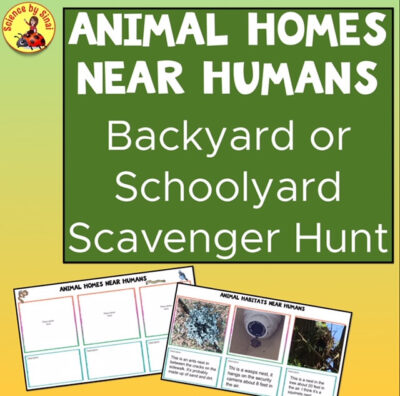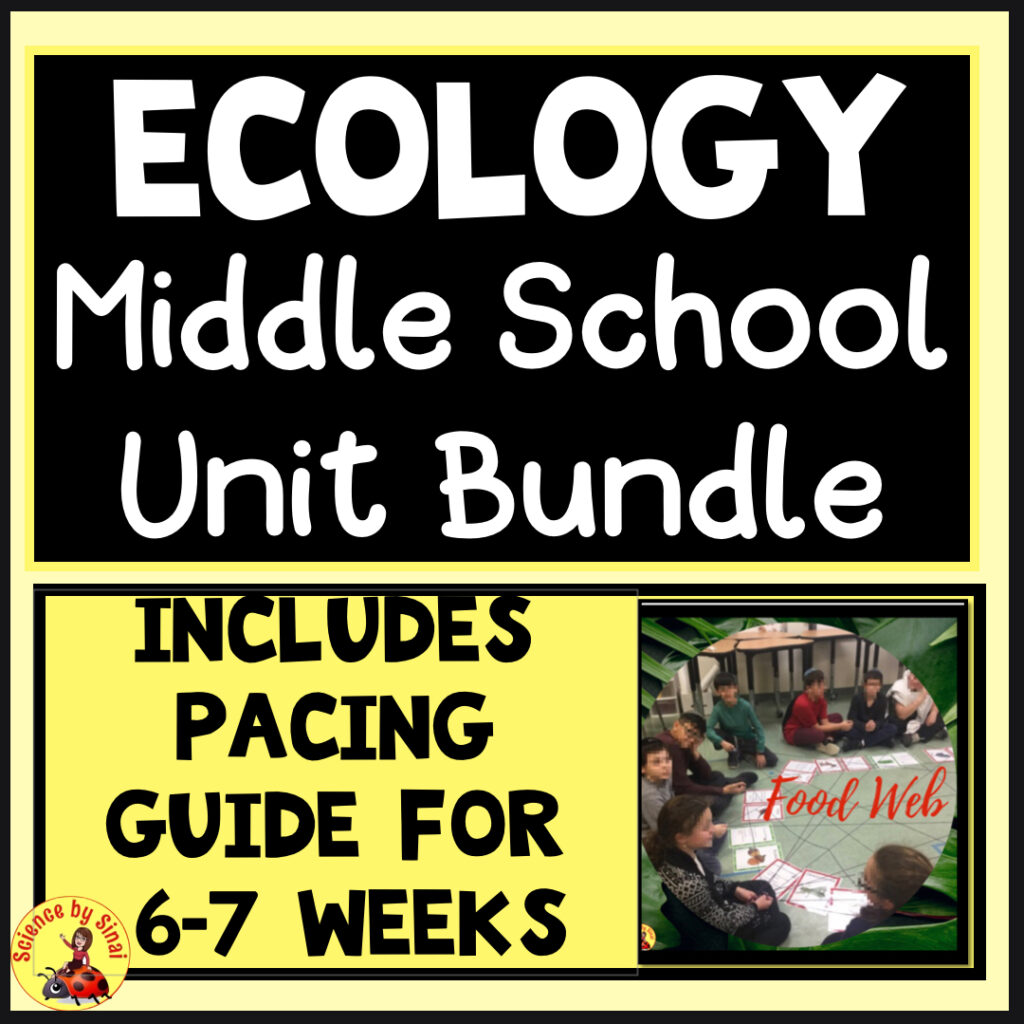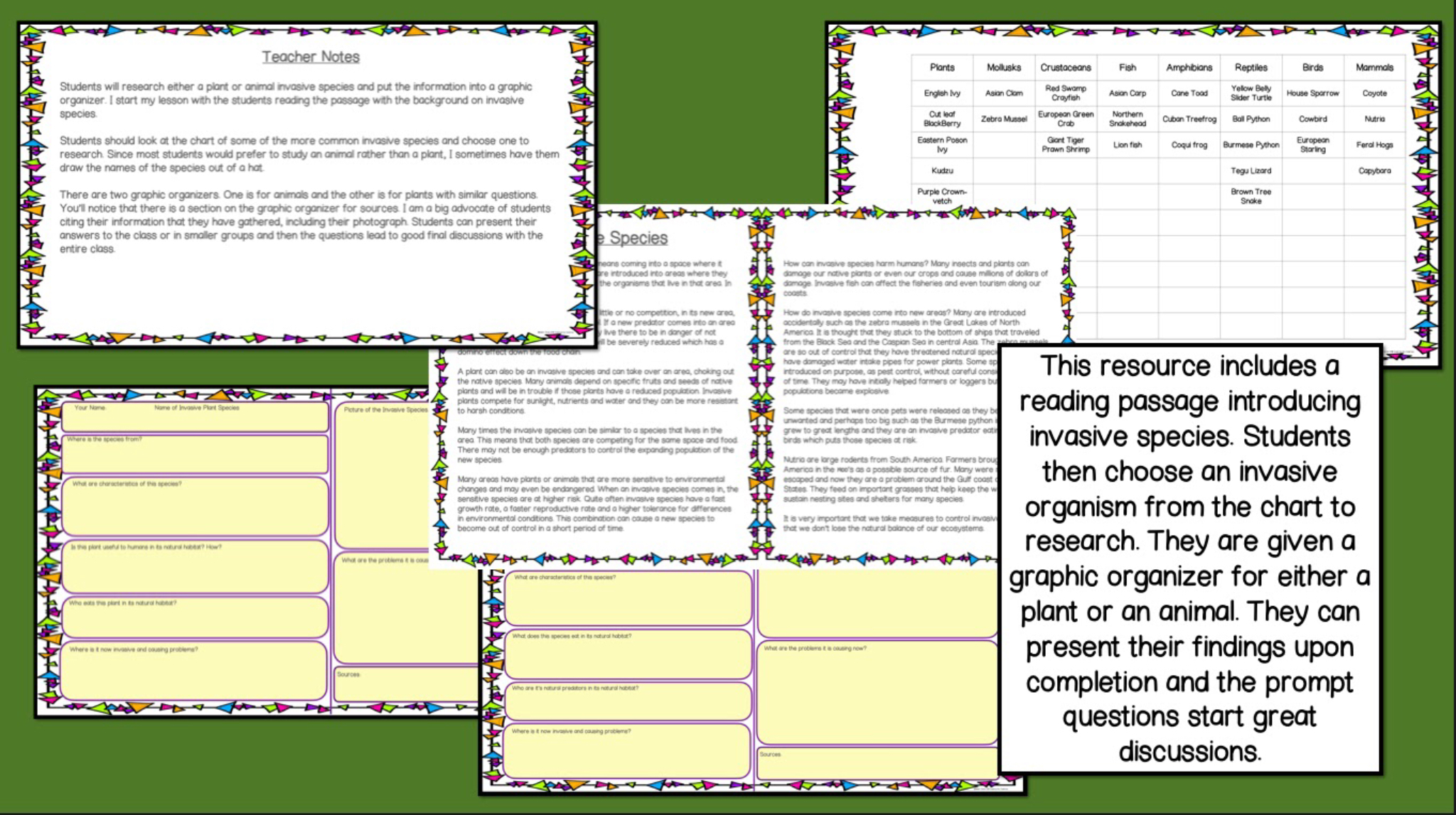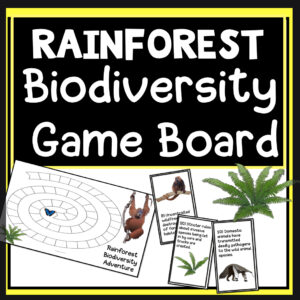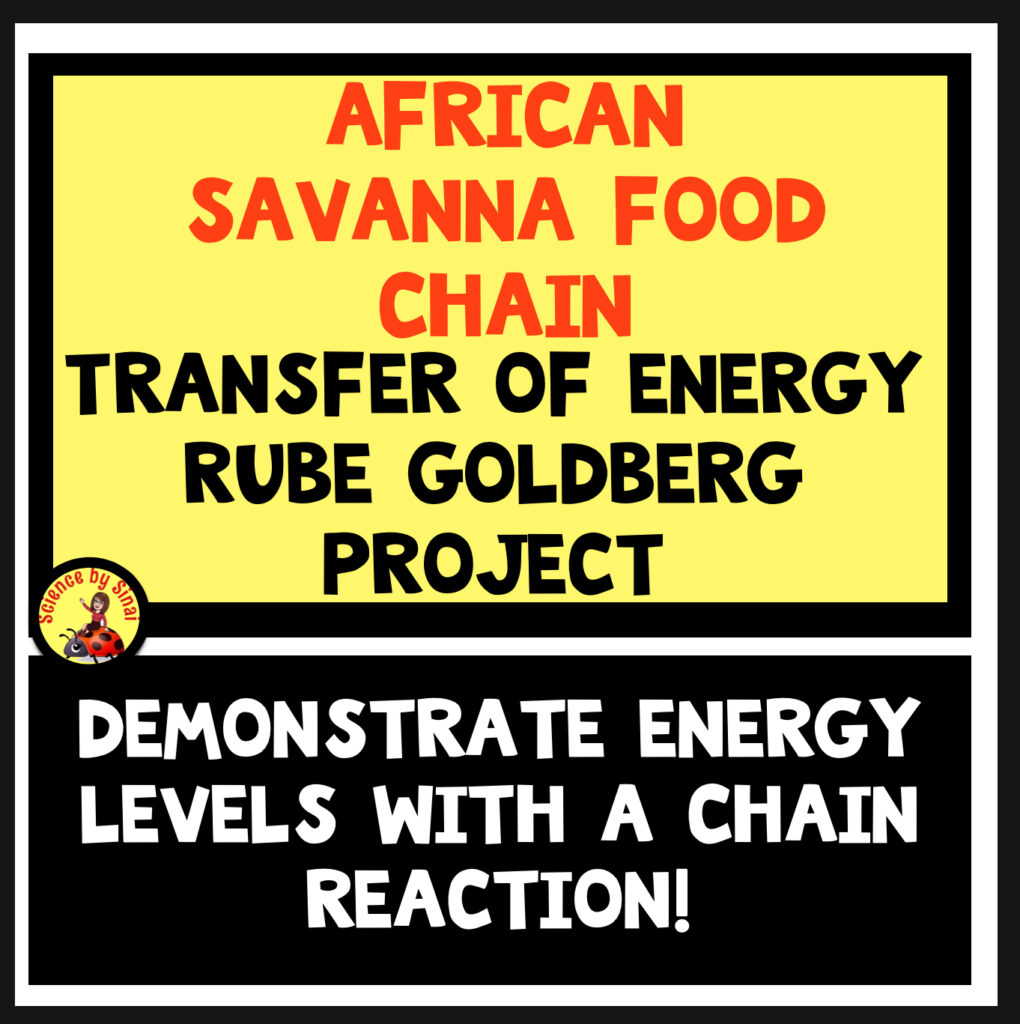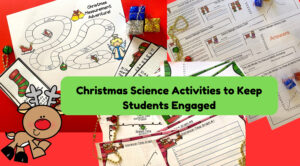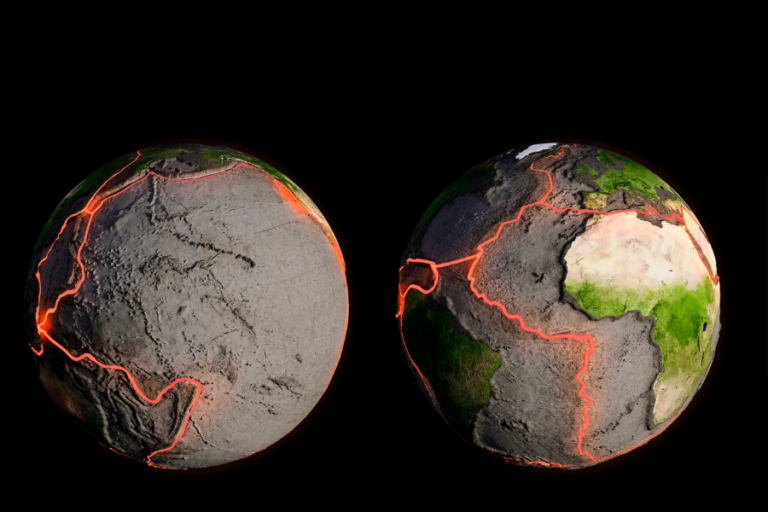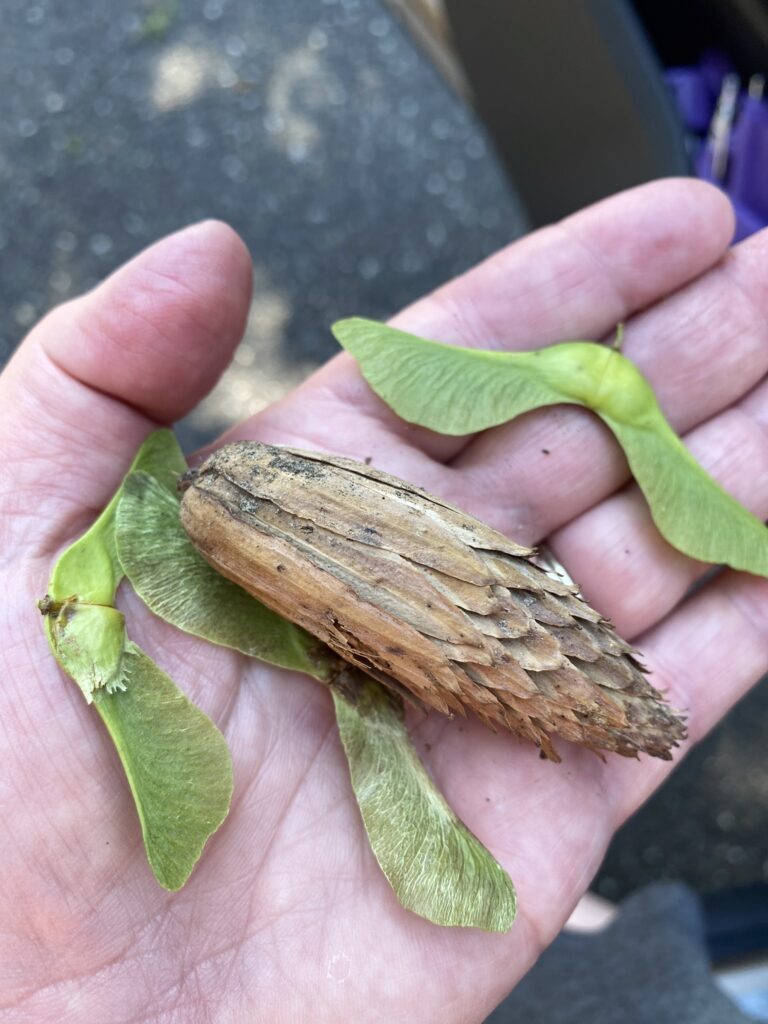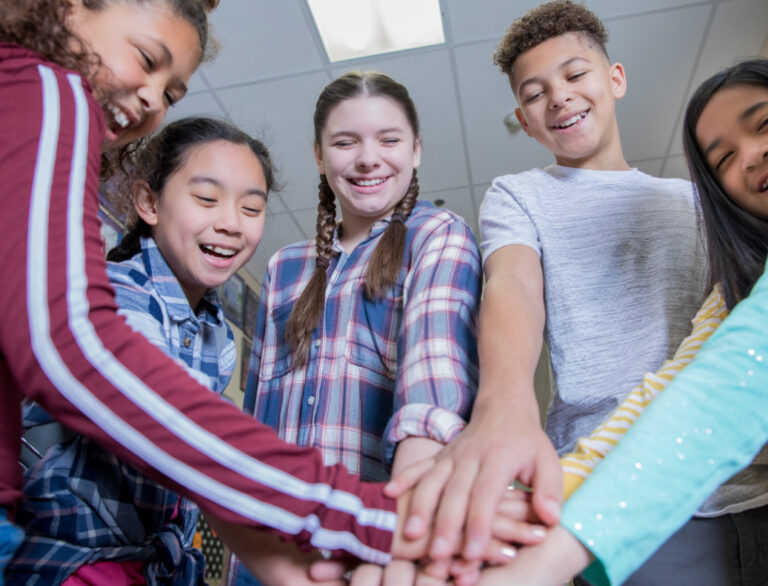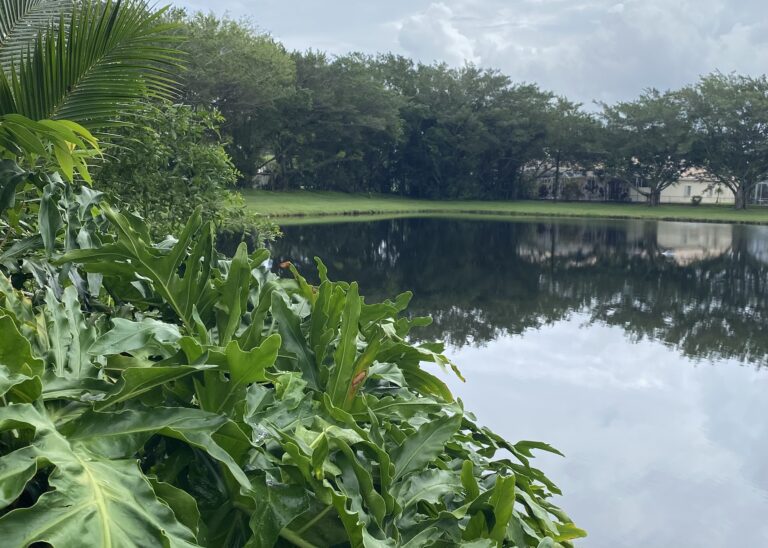How to Make Food Webs Interactive and Fun!
Are you looking for more engaging ways to teach the important concepts of food chains and webs? Do you want dynamic activities that you can refer back to over and over again?
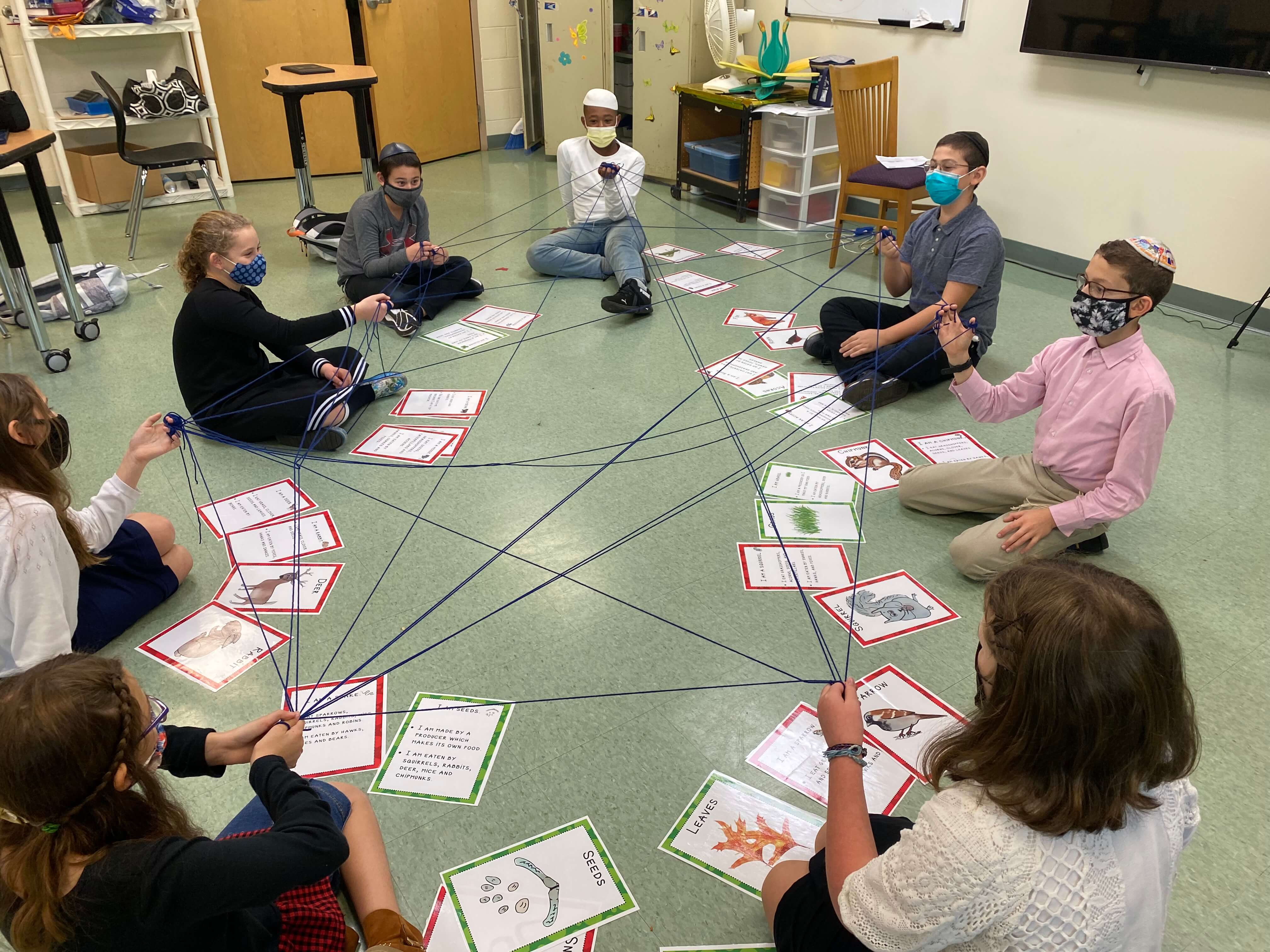
How to Make Food Webs Interactive and Fun!
Updated October 25, 2021
Here are some super fun activities that involve every student in a memorable, exciting way! They will completely understand the interdependence of food webs and the energy levels of food chains.
NGSS Standards
LS2-3 Develop a model to describe the cycling of matter and flow of energy among living and nonliving parts of an ecosystem.
LS2-4 Construct an argument supported by empirical evidence that changes to physical or biological components of an ecosystem affect populations.
Food Chains First
It is best to start this unit by introducing the energy that moves through food chains in the different ecosystems. We discuss how energy moves from the plants all the way up to the top predators.
The concept that only about 10% of the energy moves from level to level in the food chain, called the “10% rule“, is introduced.
If only 10% goes up to the next level then where does the rest of the energy go? At each level some energy is converted to heat during respiration, (before teaching this unit I introduce the photosynthesis and respiration equations and discuss the relationship between the two). Some energy is excreted as waste and some plants or animals die, without ever being eaten, so their energy is not passed on through the food chain.
This 10% rule also keeps a food chain from getting too long, since the top predator would not be getting enough energy if so much energy is lost at each level.
It is easiest to start learning about the ecosystem where your school is located. In my case, we are in the Northeast United States, so we look at animals from the temperate, deciduous forest. These are most familiar to the students.
Rather than simply showing the food chains to the students, I have them figure the order out using my drag and drop food chain activity. I am often surprised that, even in middle school, students don’t always understand which animals are carnivores and herbivores.
Students also enjoy creating the food chains from the African savanna. (food chain activities for the rainforest, desert and ocean are coming soon to my TpT store). I use these in my environmental science unit and in preparation for Earth Day activities.
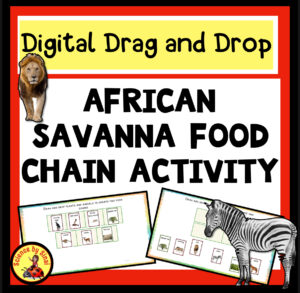
Create a Huge Classroom Food Web!
Now the real fun begins! Using their knowledge of food chains, they are now going to make a giant, student interactive food web! Students sit on the floor, in a circle, and I hand them the cards that show what each animal eats and who eats them. In the case of plants, there is a list of who eats them.
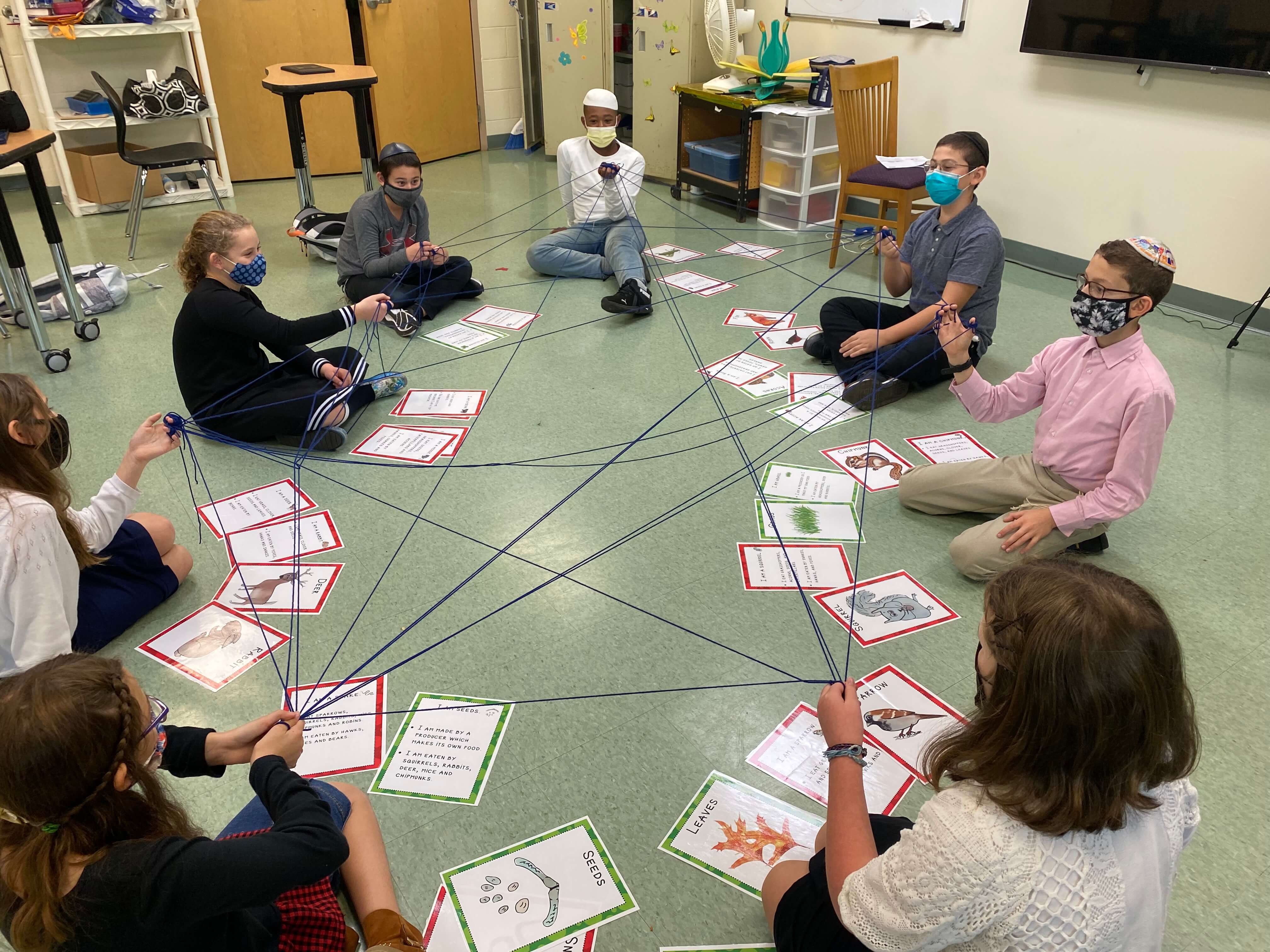
Each student reads off what is on their card and I run around the outside of the circle, with a ball of yarn, and cut pieces to connect two students together.
For example, the fox will have a string connected to the rabbit. The rabbit will also have a string connected to the clover. By the time we are done, all of the students are holding multiple strings and they absolutely love it!
As they sit holding the strings with the food web completed, I have different students slowly raise their hand holding the strings to show the effects on the rest of the web. For example, if a disease were to hit the mouse population, there are many strings attached to the mouse and it would affect the food web quite drastically.
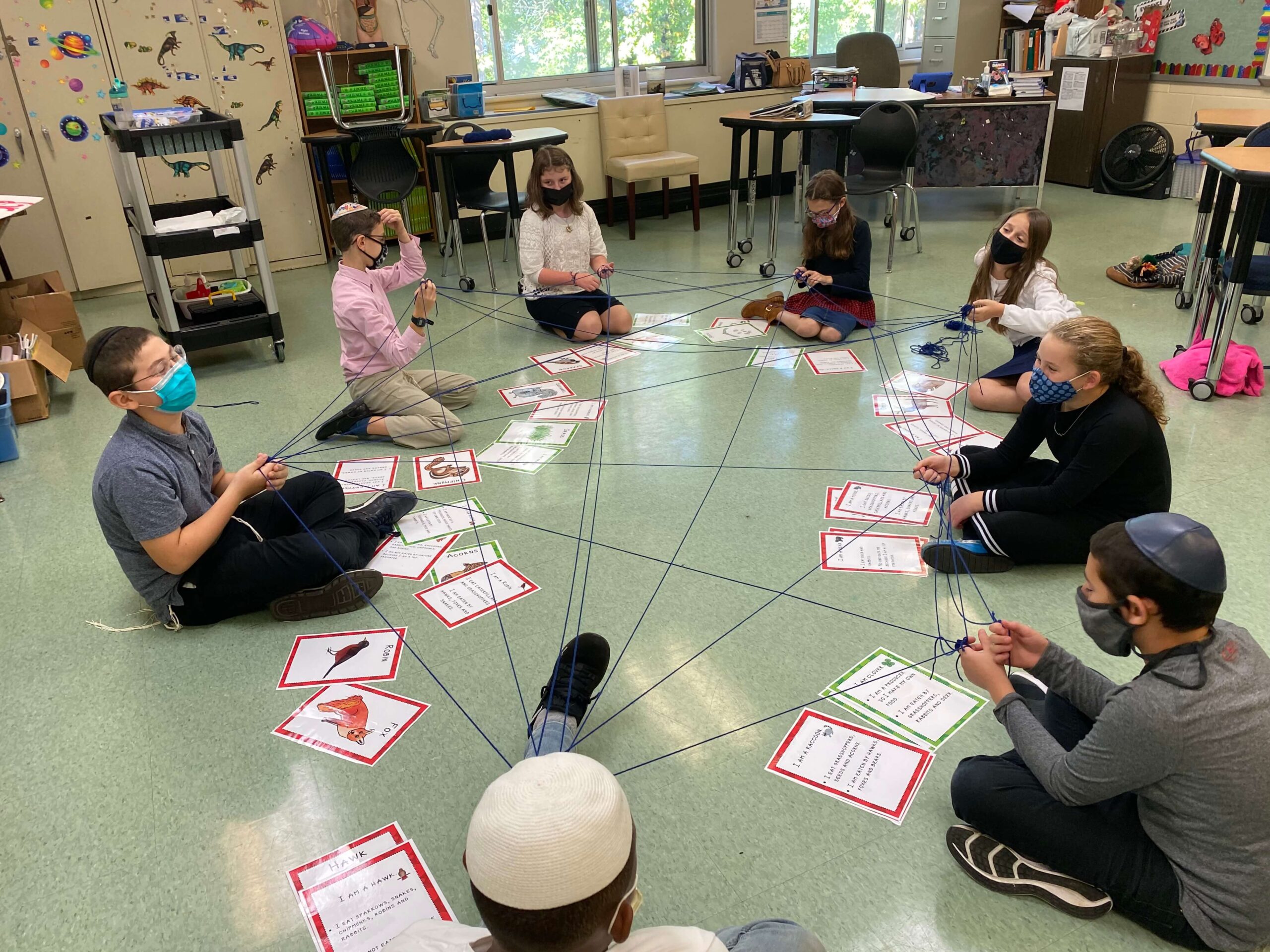
We discuss what would happen if the top predators were removed and watch how those strings touch so many others.
After the discussion is over, I enlist a student to carry the card labeled “pollution” to run through the middle of the web! After students get over being surprised, we discuss what just happened to the web. (Blog post on how I do it)
Reinforce the Food Web Concept Using This Activity
To solidify the concept, students use my digital food web on Google slides (in their digital science notebooks) to connect the food chain lines. It is a reinforcement of what they did while they were sitting on the floor in the yarn web activity. Depending on the level of the students, I have them try to remember the food chains themselves or I give them the food chain list and they add the connecting lines.

If the excitement level was high enough during the first food web circle on the floor, I may do another food web from a different ecosystem a few days later. My choices are the African safari, Rainforest, Ocean or Desert. Since my students don’t live in those ecosystems, using unusual plants and animals can be a little bit more challenging.
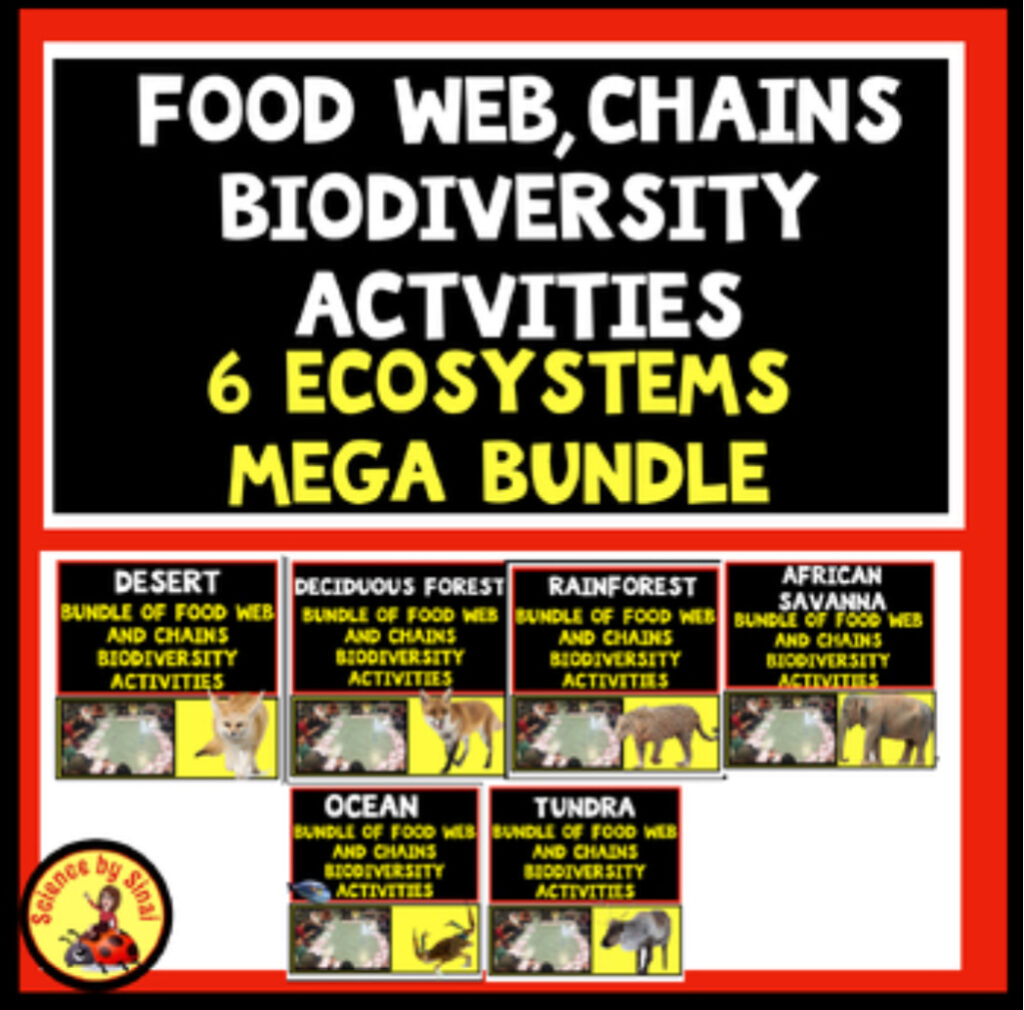

What Would an Invasive Species Do To a Food Web?
As we finish up the food webs, we can start discussing how important biodiversity is and I prefer to start with the important question of “what if a different species came into this food web that didn’t belong there?” Not all students have heard of invasive species and may be surprised at how many of the animals in their area are actually not native!
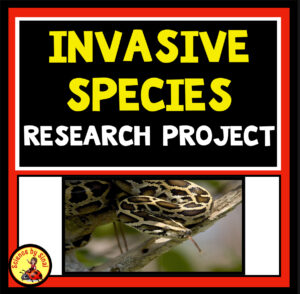
I assign my brief Invasive Species research project on either a plant or animal that has invaded a specific ecosystem. I give them the list of choices, or they can find their own with my approval. Specific prompt questions in a graphic organizer help students stay on task. Students are usually given about four or five days to research and then they present their findings to the class.
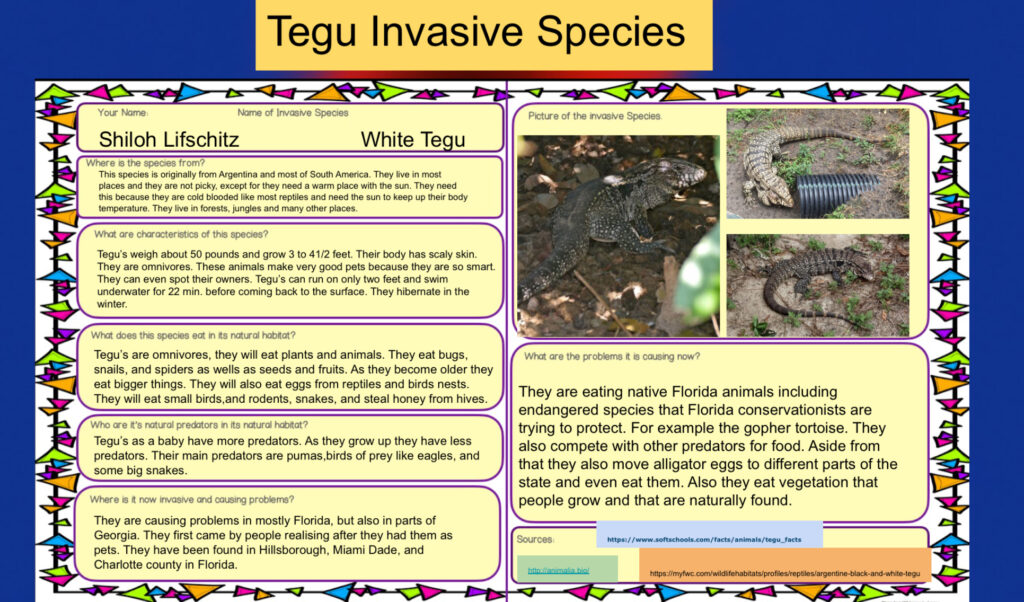
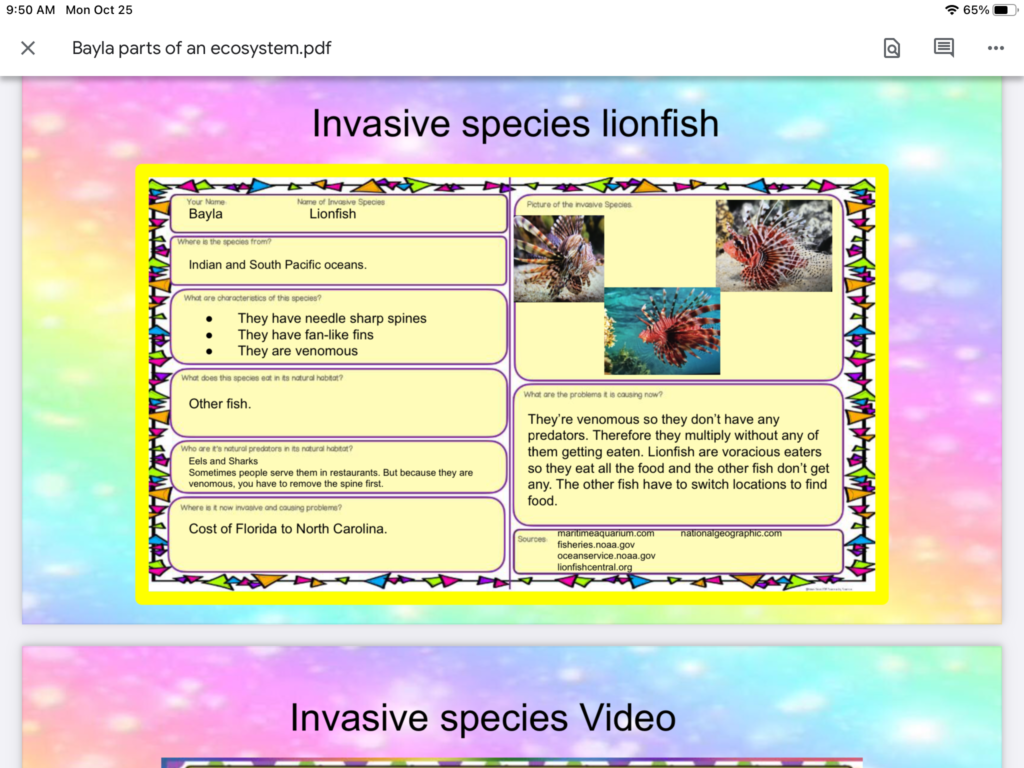
Why is Biodiversity So Important?
Once students have presented their invasive species projects, and they understand how important it is keeping a food web intact, we delve deeper into biodiversity.
We discuss how having a lawn in their yard is very “unnatural”. They always seem so surprised to learn that man has created areas with only one or two species of plants which has changed the local ecosystem. This is also the case in areas growing food crops.
What would happen if we didn’t mow our lawn? What would it look like in a month? In a year? In five years? Students start to realize that the “natural state of their lawn“ would return if we didn’t stop it with our lawnmowers.
I take the students outside to areas of the schoolyard that are mowed and to areas that aren’t. I take a hula hoop out with me and toss it into different areas and then we try to roughly count the different types of plants that we see. We notice that the mowed areas have only one or two species.
We discuss the three main types of biodiversity, genetic diversity, species diversity and ecosystem diversity.
Genetic diversity is how many genetics variations there are in a population in a given area. For example, the different body sizes, fur color and tail thickness of gray squirrels depends on their genes.
Species diversity is how many different species there are in a given area and how many individuals are represented. Referring back to our food web, how do those different species interact with each other?
Here is a great video about how Yellowstone National park was damaged by the removal of the top predator wolves. When the wolves were reintroduced, the entire ecosystem repaired itself in dramatic ways.
Ecosystem diversity is how many different types of ecosystems are in a specific area? Each food web is found in a different area but quite often the food webs overlap, such as a deciduous forest with a stream or pond.
Play the Biodiversity Dice Roll Game!
Time for a game! This game involves students rolling a pair of dice to see what sort of natural or man made events can effect the food web. I bought big foam dice from the Dollar store to make it more visual.
Student groups are given a chart with different events that correspond with the number that they threw with the dice. For example, if they threw a total of five, the chart says “deer hunting season has been extended. Many more hunters than expected. Delete the line from the deer to the bear”. Student erase that line connecting the beer and deer on their food web.
(blog post on how we play this.)
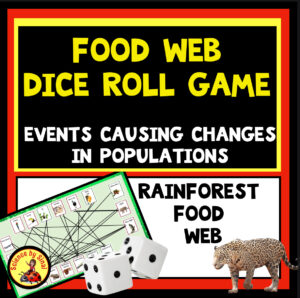
Since each of the student groups are separate, they each get different resulting “damaged” food webs after throwing their dice. I have them roll four times and then each group presents their final web to the class.
This activity leads to a lot of great discussions and I also give them eight reflection questions(included in the product). Students realize that whether the events that changed the web were man-made or natural, there is a very delicate balance in every food web and everything is interconnected.
How About a Biodiversity Board Game?
This is a 2-3 player game where the students read each card that has an event on it from the rainforest ecosystem. Students determine if the statement increases biodiversity (move one space forward) or reduces it(move one space backwards). THESE CARDS MAKE GREAT RESEARCH PROMPTS!
For more depth, students use the playing cards to fill in a chart where they determine high or low biodiversity. I also have a Desert Biodiversity game.
Invasive Species Dice Roll Game
A variation on the game above is using the dice roll format to see what invasive species do to a specific food web. Students fill out the food web with the lines that connect the plants in the animals of the food chains. They then learn about eight different invasive species, from that ecosystem, that are causing problems.
Students roll the dice to see which invasive species is harming which native plants or animals. They use the chart to determine which lines they should ERASE between two organisms in the food web.
For example, the Burros(wild donkeys), in the desert, are aggressive and invading the territory of the Pronghorn Antelope. This will cause the Pronghorns to move out of the area. What will the affect be on the food web? The Mountain Lion will have less food so the students will erase the line between the Pronghorn and the Mountain Lion. What about the plants that the Pronghorns ate? Students will erase a line between the grasses and the Pronghorn.
This activity is visually dramatic! Also, no two student groups will get the same results, which leads to awesome discussions.
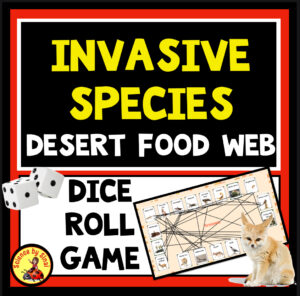
Challenge Your Students with an Energy Transfer STEM Project!
Food chains are all about energy transferring from one organism to another in literally a “chain reaction”. What else has chain reactions? Rube Goldberg machines!
This highly structured project involves each group of students given a four level food chain from different ecosystems. They are assigned a producer, first consumer, second consumer and a top predator.
Their task is to create a four level Rube Goldberg machine to represent the food chain! (STEM Energy Project Using Rube Goldberg Machines and Food Chains!). I have several biomes such as a deciduous forest, ocean, rainforest, African savanna, tundra and desert in my Teachers Pay Teachers Store. You can click on the image below.
Conclusion
By the time the students have completed the above activities, they have a good understanding of the interdependence of the plants and animals in the ecosystems of the world. To finish up this unit, I take them outside to observe their local food chains. We begin discussing how the abiotic (nonliving) factors also tie into the ecosystem. Please see my blog post called GO OUTDOORS ON AN EXCITING SCHOOLYARD ECOSYSTEM SCAVENGER HUNT.
